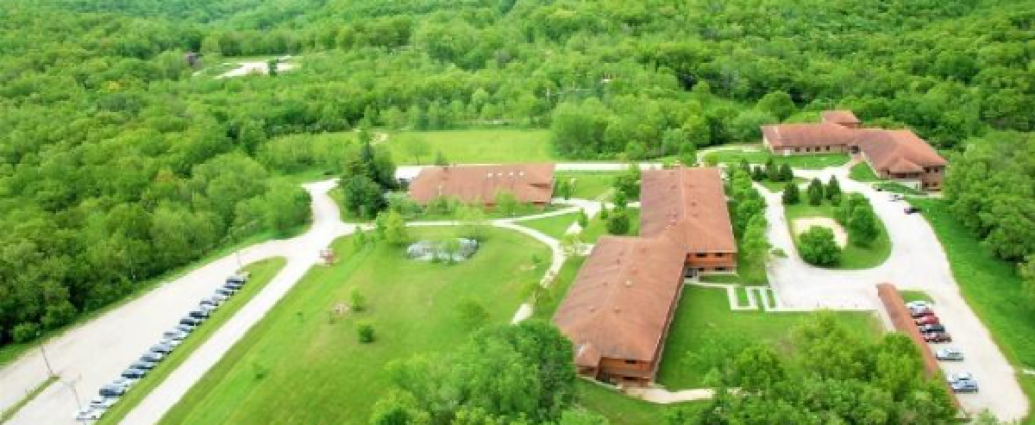The following provide a wealth of resources for use by educators desiring to enrich learning about the Driftless Region through hands-on or place-based learning. School field trips may no longer be an option due to funding and recent pandemic challenges but parents may seek to visit nature centers and refugees with their children. Educators might also call these centers to see if they do any virtual programming using Zoom or other video field trip technologies.
Minnesota
1) Eagle Bluff Environmental Centerhttps://eaglebluffmn.org/
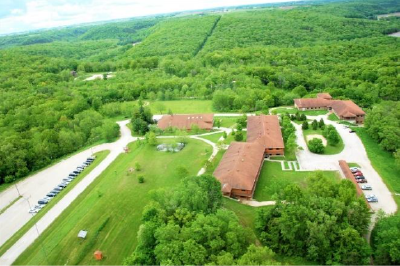 (507) 467-2437
(507) 467-2437
28097 Goodview Drive
Lanesboro, MN 55949
Year-round environmental learning center located in rural southeastern Minnesota, just a few miles from the small historic town of Lanesboro in Fillmore County, the heart of the Minnesota Driftless Region. The campus is a two-hour drive from the Twin Cities, 45 minutes from Rochester, 45 minutes from Winona, and one hour from La Crosse, WI. Find out what makes this center so extraordinary for school and overnight trips, summer and family camps, team building, adult learning and continuing education, environmental education fellowship, and public hiking and recreation. https://eaglebluffmn.org/resources/driftless/
The K-12 Residential Outdoor School Program is based on the belief that students learn best when they engage directly with nature, learn through discussions, think like a scientist, and follow the learning cycle.
Lodging accommodations are available for overnight Outdoor School with 31 rooms accommodating up to eight people. See https://eaglebluffmn.org/campus/lodging/ for more detailed information.
2) Niagara Cave https://www.niagaracave.com/
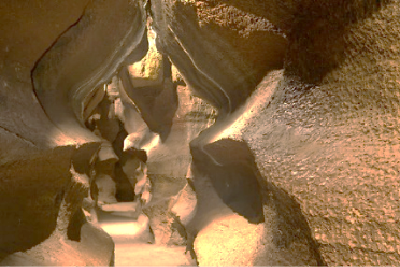 29842 County Hwy. 30
29842 County Hwy. 30
Harmony, MN 55939
Tel: 507-886-6606
Email: niagaracave@gmail.com
Located near Harmony, MN was discovered in 1924 and is one of two publicly accessible limestone caves in Minnesota. Explore Minnesota’s karst topography found in the limestone formations of this part of the Driftless Region. Karst topography features include sinkholes, springs, disappearing streams, bluffs, and limestone cave systems. One hour mile long tours of the cave can be arranged by calling Niagara Cave. Education rates are available for school groups.
3) Mississippi River Visitor Center – https://www.nps.gov/miss/planyourvisit/mrvcabou.htm
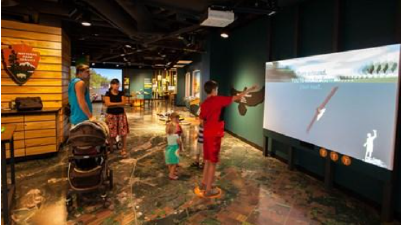 120 Kellogg Blvd West
120 Kellogg Blvd West
St. Paul, MN 55102
Phone: 651-293-0200
The Upper Mississippi River and related tributaries and watersheds are an essential part of the Driftless Region defining the landscape and its river erosion and deposition features. Visit the Mississippi River Visitor Center to see videos about the Mississippi National River and recreation and other parks within the National Park system, interactive exhibits, reading nook, and Junior Ranger program. Exhibits explain Mississippi River culture, biology, and history.
A Hamline University Center for Global Environmental Education online program for grades 3-5, Big River Journey Online, is available via https://bigriverjourneyonline.org/ Explore the mysteries of the Mississippi River through the education resources, videos, and activities and engage in a virtual trip on the Mississippi River.
An extension scavenger hunt guided exploration activity is available as well called Waters to the Sea Mississippi River Adventure https://waterstothesea.org/mississippi/ Learning modules include the water cycle, watersheds, water quality and ecosystems. A wonderful matrix of standards aligned resources (lesson plans, YouTube playlists, panorama images, and interactives) for grades 5-8 found via https://waterstothesea.org/mississippi/. Be sure to view the Educator Resources tab at the top of the page.
4) Visit the Scenic Overlooks
Students love to get outside and experience the Driftless Region through hikes and hands-on learning. The Great River Road Overlooks provide opportunities for exploration, ecology, and wildlife viewing.
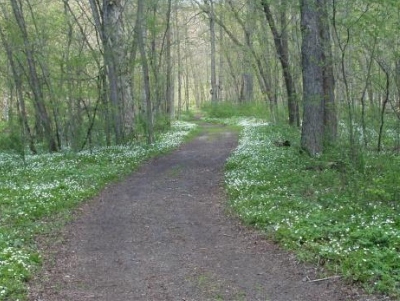
- Great River Bluffs State Park –https://bit.ly/3oo5but43605 Kipp Drive, Winona, MN 55987 contains two Scientific and Natural areas, King’s and Queen’s Bluff and panoramic views of the Mississippi River Valley along with abundant wildlife, including more than 100 species of birds.

- Brownsville, MN Overlook – Map link https://bit.ly/2S2cU58
This wildlife viewing area overlook is located approximately one mile south of Brownsville on U.S. Highway 26, part of the Great River Road and Great River Birding Trail.
http://wildlifeviewingareas.com/viewing-area/upper-mississippi-river-nwr-brownsville-overlook-iba/
Brownsville Overlook is a hot spot for wildlife viewing: eagles and pelicans, coots and ducks, to tundra swans and geese. Bird spotting cam linkhttps://www.fws.gov/refuge/upper_mississippi_river/weekly_bird_sightings.html
Wisconsin
1) Upper Mississippi River Visitor Center- National Wildlife and Fish Refuge
N5727 County Road Z, Onalaska, WI 54650
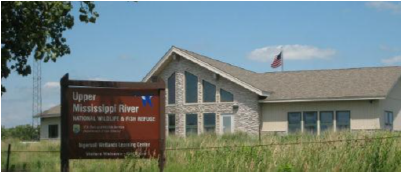
|
Visitor Services Specialist |
608 779 2391 |
|
|
Visitor Services Manager |
608 779 2392 |
The USFWS Visitor Center offers Interactive exhibits, river walk, trails, prairie plants, and diverse wildlife including bald eagles and waterfowl. Environmental education programs available to educators and students by contacting Katie Julian or Hallie Rasmussen. The USFWS staff were featured in Decoding the Driftless!
2) Necedah National Wildlife Refuge Visitor Center
https://www.fws.gov/refuge/necedah/visit-us
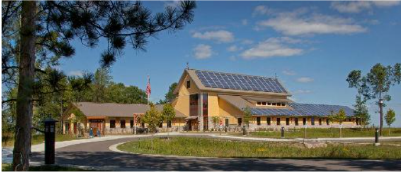 N11385 Headquarters Road
N11385 Headquarters Road
Necedah, WI 54646
(608)565-2551 voice
This US Fish & Wildlife Service Wildlife Refuge is located in northern Juneau County, Wisconsin near the village of Necedah and is more than 43,000 acres. It was established in 1939 and is famous as the northern nesting site for reintroduction of an eastern United States population of the endangered whooping crane. Sedge, savannah, prairie and pine oak forest where a variety of wildlife and plants/trees are found including trumpeter swans, wolves, badgers, woodpeckers, and butterflies. 110 species of migratory birds and 44 species of butterflies visit the Refuge yearly.
Educators are encouraged to visit https://www.fws.gov/nwrs/threecolumn.aspx?id=2147537575 for details on field trips, classroom visits, virtual learning, and resources. Arrange for school groups, scouts, youth groups and summer camps by contacting the Education Coordinator at 608-565-4403 or email: Necedah@fws.gov
Visitor Center Fact Sheet: https://www.fws.gov/uploadedFiles/greening%20fact%20sheet.pdf
Map of Visitor Center Trails: https://www.fws.gov/uploadedFiles/visitor%20center%20trails.pdf
Bird Check List: https://www.fws.gov/uploadedFiles/BirdChecklist(2).pdf
3) Driftless Area Land Conservancy – Land Trust of Southwest Wisconsin
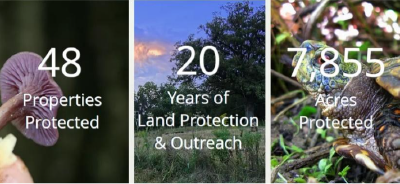 Driftless Area Land Conservancy
Driftless Area Land Conservancy
206 S. Iowa Street
P.O. Box 323
Dodgeville, Wisconsin 53533
(608) 930-3252
Protecting private lands through conservation easements and educating, engaging and inspiring as well as connecting them to the land. Focused on land protection and management at over 7,000 acres on 48 sites in permanent protection status. Educational Programs Coordinator Emily Benz via email or call our office at (608) 930-3252 to learn more about how to get outside with us. See https://www.driftlessconservancy.org/education for education and outreach details.
Check the field trip link for scheduled events: https://www.driftlessconservancy.org/general-field-events Driftless Trail information: https://www.driftlessconservancy.org/driftless-trail where you can hike a three mile loop or a multi-day 50 mile loop Tower Hill, Governor Dodge, and Blue Mounds State Park.
5) Kickapoo Valley Reserve– http://kvr.state.wi.us/Home
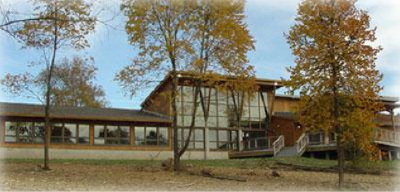 Kickapoo Valley Reserve
Kickapoo Valley Reserve
S3661 State Highway 131
La Farge, Wisconsin 54639
Phone: 608-625-2960
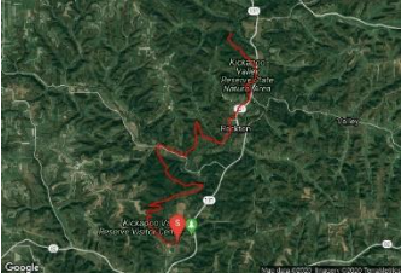 Lying between Wildcat Mountain State Park on the north and La Farge on the south, the Kickapoo Valley Reserve comprises 8,589 acres in Vernon County, Wisconsin. The large reserve had its origins as an Army Corp of Engineers flood control project. In 1996 Congress directed the Corp to return 1200 acres to the former Native American inhabitants, the Ho-Chunk Nation. The Kickapoo River snakes through the Reserve and is surrounded by hills, bluffs and rock outcroppings.
Lying between Wildcat Mountain State Park on the north and La Farge on the south, the Kickapoo Valley Reserve comprises 8,589 acres in Vernon County, Wisconsin. The large reserve had its origins as an Army Corp of Engineers flood control project. In 1996 Congress directed the Corp to return 1200 acres to the former Native American inhabitants, the Ho-Chunk Nation. The Kickapoo River snakes through the Reserve and is surrounded by hills, bluffs and rock outcroppings.
The Visitor Center houses interactive museum exhibits and classroom space. http://kvr.state.wi.us/Education Check the educational Learning Outside blog https://kvrlearningoutside.blogspot.com/ Subscribe to KVR Monthly events newsletter by sending an email to kickapoo.reserve@krm.state.wi.us
Subject head your email: Monthly events
Hands-on environmental education programs are offered for all ages. Schedule your school group information http://kvr.state.wi.us/Education/Schedule-Your-Group or contact Jonel Kiesau, education coordinator, at jonel.kiesau@wisconsin.gov or (608) 625-2965; the KVR office phone number is 608-625 2960.
6) Devil’s Lake State Park –https://dnr.wisconsin.gov/topic/parks/devilslake
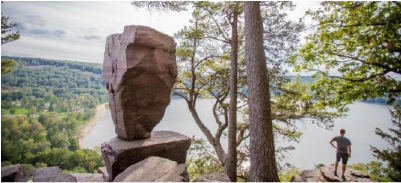 S5975 Park Rd.
S5975 Park Rd.
Baraboo, WI 53913-9299
608-356-8301
This is a wonderful place to explore the glacial geology of Wisconsin and contrast it to the adjacent non-glaciated Driftless Region. This 9,000-acre Wisconsin State Park, often called the Gateway to the Driftless, is located in Baraboo, Wisconsin. The Western part of Devil’s Lake actually lies within the Driftless Region allowing a bird’s eye view of both landscapes.
Devil’s Lake area is surrounded by bluffs which are the remnants of ancient mountains older than the Rocky Mountains. They are often referred to today as the “Baraboo Hills.” These hills later became islands in tropical seas. The area was glaciated during the past glacial period about 15,000 years ago. Potholes found a top East Bluff were believed to be evidence of glacial meltwater erosion but are more likely to have formed long before glaciers covered the area. Devils Lake was once a gorge of the Wisconsin River prior to the last Ice Age but glaciers deposited materials and blocked the river forcing it to take a route east of the Baraboo Hills.
Educators may wish to view the video,Geology of Devil’s Lake, by geologist and author Steven Baumann which offers a nice walk-through tour covering some of the geologic highlights along the bluffs and rim at Devil’s State Park in Wisconsin. Also, see https://dnr.wisconsin.gov/topic/parks/devilslake/geology and The Ice Age Geology of Devils Lake State Park an excellent overview of the geology of Devil’s Lake https://wgnhs.wisc.edu/catalog/publication/000184/resource/es035
A nature center (Seehttps://dnr.wisconsin.gov/topic/parks/devilslake/naturecenter) with educational programs for families and school groups of all ages is available. School groups or people wishing to schedule a program, or a nature center visit may contact the park naturalist, (608) 356-8301 Ext. 140, for details and hours.
For all teachers seeking Environmental Education resources in Wisconsinhttp://eeinwisconsin.org/core/news/list.aspx
For all teachers seeking Environmental Education resources in Minnesota
https://www.dnr.state.mn.us/education/teachers/index.html and Minnesota Association for Environmental Education https://minnesotaee.org/
Resources for Educators – Iowa Driftless Region
The following provide a wealth of resources for use by educators desiring to enrich learning about the Iowa Driftless Region through hands-on or place-based learning. School field trips may no longer be an option due to funding and recent pandemic challenges but parents may seek to visit nature centers and refugees with their children. Educators might also call these centers to see if they do any virtual programming using Zoom or other video field trip technologies.
1) Effigy Mounds National Monument
https://www.nps.gov/efmo/index.htm
Mailing Address:
151 Hwy 76
Harpers Ferry , IA 52146
Phone:
(563) 873-3491 x123
Visitor Center front desk
Plan a field trip or museum tour: For more information on reserving a ranger conducted program – contact the Monument at 563.873.3491. Entrance to the Monument is free for all groups.
https://www.nps.gov/efmo/learn/education/planafieldtrip.htm
Junior Ranger and Archeology Day https://www.nps.gov/efmo/learn/kidsyouth/index.htm
More info found at Trip Advisor’s Effigy Mounds link https://bit.ly/3pprobW
2) Driftless Area Wetlands Centre – https://www.driftlessareawetlandcentre.com/
509 US 18
PO Box 7
Marquette, IA 52158
Phone: (563) 873-3537
Nature center located near Marquette, Iowa providing interactive educational experiences for a diverse audience from families to students. Come explore and discover.
driftlessareawetlandcentreia@gmail.com
3) Iowa Environmental Focus Blog (official blog of the University of Iowa Center for Global and Regional Environmental Research) is a non-profit source for Iowa-specific news, analysis, research, and commentary on the environment. It covers a range of topics including air and water quality, climate change, extreme weather, sustainable communities and green energy.
Driftless Areas specific info: https://iowaenvironmentalfocus.org/tag/driftless-area/
EnvIowa Podcast: https://iowaenvironmentalfocus.org/multimedia/enviowa-podcast/ Excellent series of podcasts on topics such as science education, climate change, Iowa science standards, insect ecology, rechargeable batteries, flood mitigation, etc.
On the Radio: new radio segment called Iowa Environmental Focus with great topics such as bug invasion, drinking water, microplastics are everywhere, etc.
4) Iowa Driftless Trout Unlimited – links to fishing resources, hot topics, events, fly tying, etc.
Driftless Trout
Decorah, IA 52101
President: Steve Matter
Email: Steve Matter email
Trout Unlimited has an education outreach mission and can be contacted toll free: 1-800-834-2419
https://www.tu.org/get-involved/volunteer-tacklebox/diversity-initiative-youth-education-and-service-partnership-resources/youth-education-resources/
5) Northeast Iowa Collaboration Recognized Nationally for Environmental Education
https://bit.ly/3ikfWNt
Recently recognized northeast Iowa for outstanding work in environmental education. The Nurturing Nature Explorers in Northeast Iowa Project received first place nationally for environmental education during NEAFCS’s recent annual session, noted Cindy Thompson, human sciences specialist with Iowa State University Extension and Outreach and team coordinator for the project. “Nature Explore promotes research-based principles through hands-on workshops and outdoor classroom guiding principles,” said Thompson, a certified Nature Explore trainer.
Contact info:
Cindy Thompson
Human Sciences Extension and Outreach
Family Life
319-334-8013
cpthom08@iastate.edu
6) The Nature Conservancy Iowa related https://www.nature.org/en-us/get-involved/how-to-help/places-we-protect/the-driftless-area-region/
Be sure to check out the web pages on various Iowa specific environmental topics including The Power of Wetlands https://www.nature.org/en-us/about-us/where-we-work/united-states/iowa/stories-in-iowa/power-of-wetlands/
7) Algific Talus Slopes Iowa – https://www.iloveinspired.com/places/terrific-algific-talus-slopes-secret-ecosystems-in-the-driftless-region/ and Algific Talus Slopes | Iowa Land and Sky https://www.youtube.com/watch?v=oGPDEA9Ea44
8) Caves and Caving – Iowa https://www.luther.edu/recservices/outdoor-recreation/activities/caves/
Coldwater Cave: https://caves.org/project/coldwater/index.html
Exploring Iowa’s Coldwater Cave by Iowa PBS: https://www.youtube.com/watch?v=LroJXsW9jAI
9) Decorah Fish Hatchery https://decorahfishhatchery.org/
A visit to the Chuck Gipp Decorah Fish Hatchery can include seeing (and feeding!) trout, enjoying Iowa’s second largest natural spring, fishing for trout, biking or walking on the Trout Run Trail, or catching a glimpse of the area’s most famous residents – the Decorah eagles.
10) The Raptor Resource Project Decorah Eagles https://www.raptorresource.org/birdcams/decorah-eagles/
Director
John Howe
For media inquiries, please contact either Amy Ries (amy@raptorresource.org) or John Howe (john@raptorresource.org).
The Raptor Resource Project | Education, Conservation, Research | amy@raptorresource.org or 276-FALCON2 (276-325-2662) | PO Box 16, Decorah, IA 52101
Bird Cams 14 bird cams available: https://www.raptorresource.org/birdcams/
Online Learning
We annually engage several million people through our streaming and social media sites, including Explore.org, Facebook, Twitter, and our own website. Our moderators provide information to classrooms at no cost and our students range in age from preschool through seniors enrolled in life-long learning programs. Through the Decorah Eagle Cam and its other websites, the Raptor Resource Project provides the largest free wildlife education program in the world.
Are you an educator, a homeschooler, or a tutor? We invite you to sign up for a classroom account here: https://www.raptorresource.org/classroom/
Account holders must be at least 18 years of age to have an account, and the room is COPA-compliant. We look forward to chatting with you!

